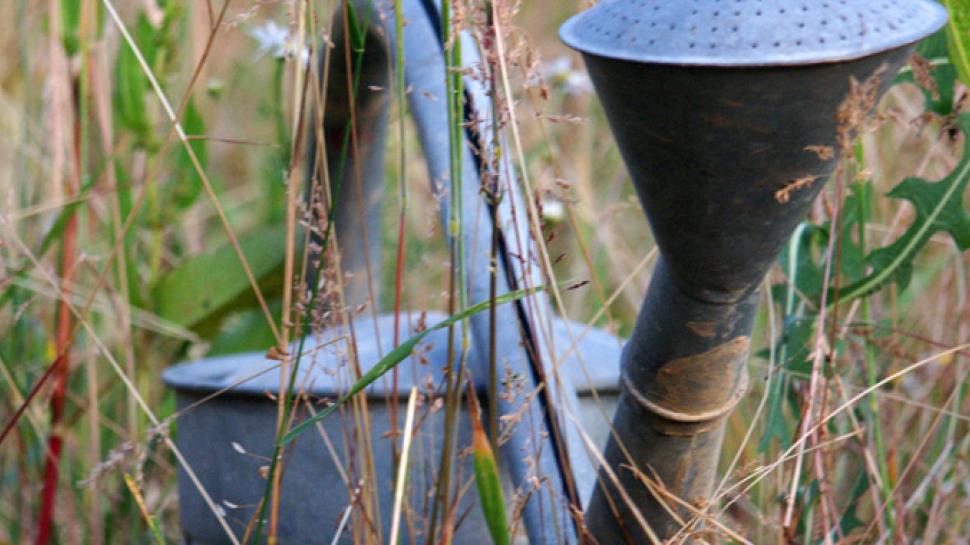Free shipping with orders over 200$* within Canada
ONLINE orders temporarily suspended to USA. CONTACT US to proceed

Water Wise Gardening
Here in Eastern Canada (Montreal) we are fully immersed in the dog days of summer. After a cool, damp spring that left most of the region water-logged and flooding, we have shifted to the extreme opposite. The heat and sun have been with us day-in, day-out with only the occasional deluge when a thunderstorm rolls through. Even those have been few and far between and most of the lawns and parks have transformed from lush green carpets to straw-like bamboo mats. Gardeners invest time and money and lots of love into transforming their outdoor space into temporary oases and aren’t about to let the fruits of their labours dry to a crisp. Lawns are resilient and will recover amazingly fast after 2 or 3 days of rain. Shrubs, perennials and especially annuals, not so much. Whether you are environmentally conscious or not, water restrictions are the norm and we have to come up with innovative ways to keep our spaces hydrated without sneaking out at midnight with the hose. Here are some good tips I have learned over the years:
- Start from the bottom up. Your earth will make a world of different to the health of your plants. Make sure you have supplemented your gardens with manure, compost and peat moss. Enriching your soil will help it to retain moisture. Once your garden is planted (this works for containers as well) cover with a good thick layer of mulch which will further aid in keeping in moisture.
- For container planting – the bigger and deeper the better. Small pots dry out in a matter of hours on a sweltering day and eventually run out of room for spreading roots which will result in a dead plant. (The larger a plant’s root system, the less water it takes to sustain it. The same holds true for lawns.) The extra investment in a large pot or container as well as wide, deep window boxes is well worth it. Your plants won’t dry out as quickly and you will have a far more impressive display. ALWAYS use potting soil which contains materials specially designed to retain moisture. As well, the new resin containers keep in moisture far better than the traditional clay pots. (And you won’t end up with an aching back after lugging them around.)
- Invest in irrigation hoses that send water directly into the earth. Traditional sprinklers not only can be wasteful in their water distribution, they also weigh down perennials in full flower and damage the delicate blooms (though they work fine for large expanses of lawn). If watering by hand, aim the water at the root of the plant and not the crown. Shrubs and roses benefit from long, deep watering as opposed to short spurts on a daily basis so don’t waste your time, you may do them more harm than good.
- Ideally, water in the early morning (no later than 9 am) to avoid water evaporation though watering at night is far more practical for most of us ( the down-side being that you promote more disease and mildew as the plant surface stays moist for longer.) As well, use water you would normally put down the drain in the house to water plants outside (i.e. from drinking glasses, cooking etc.)
- If you really hate the hassle of watering but love flowers, invest in ones that are drought resistant. Check here for a listing of plants that can withstand dry conditions. http://gardening.about.com/od/gardendesign/a/Xeriscaping_3.htm
- Last but not least, try and invest in a rain barrel for the times when we do get rain. Sudden downpours (as opposed to gentle continuous rain) result in most of the water running off the surface of the ground which is of no use to your garden. But a rain barrel will fill up quickly especially if positioned properly near the roof eaves. So those of you in parts of Canada that are experiencing cooler, wetter weather, cheer up. At least your gardens look lush and your plants are happy! If any of you have any watering tips of your own, please share them with us. I’m off to practice my rain dance!
Margaret
‘Gardeners know the best dirt’